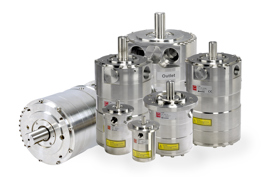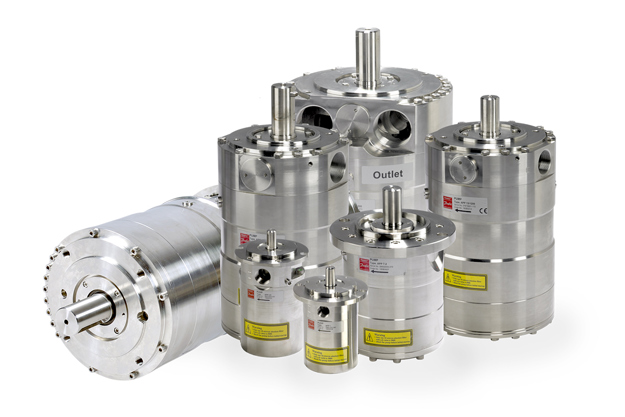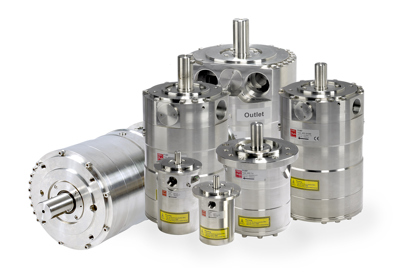This article asks several questions regarding the many plants that use trains to deliver between 1,000 and 15,000 CMD: How many high-pressure pumps should one train have? At what point are centrifugal pumps no longer the best option and should be replaced by positive displacement pumps? There is no simple answer to these questions, but this article points to the five factors that affect the decisions.
No matter what pump technology they use, multiple train configurations are now typical for most midsize and large SWRO plants.
For small and midsize trains up to 5,000 CMD, positive displacement (PD) pumps are a proven technology. This is primarily because PD pumps, with their 90% efficiency, reduce energy costs compared to centrifugal pumps. Although one pump per train is the preferred way to configure parallel trains, an increasing number of system designers are specifying multiple PD pumps per train in order to achieve energy cost savings. Currently, one single PD pump for SWRO is available at flow rates up to 1,800 CMD.
However, for SWRO trains larger than 5,000 CMD, centrifugal pumps still dominate. At a flow rate of 30,000 CMD, a single centrifugal pump delivers 87% efficiency, close to that of PD pumps. In order to achieve redundancy, a typical large plant is configured around three or more parallel trains, each of which is driven by a 10,000 to 15,000 CMD centrifugal pump. At this flow rate, centrifugal pumps deliver efficiencies that are between 72 and 84%; below 10,000 CMD, many deliver 70% or less.
Like so many other things in the world of SWRO, even the terms we use are often not standardized. Take the word "train", for example.
A train, in our definition, is a group of components that together deliver fresh water at an SWRO plant. Each train consists of one or more high-pressure pumps, membrane racks, a control system and usually one or more energy recovery devices (ERDs); shutdown of one of these three components forces the entire train to fail. An SWRO plant uses the same intake system to supply one or more trains, and each train can run independently or together in a parallel series.
In fact, there are at least four different types of "trains" in use today in midsize and large SWRO plants:
- Single pump/single membrane rack and ERD/control system
- Single pump/multiple membrane racks and ERDs/control system
- Multiple pump/single membrane rack and ERD/control system
- Multiple pump/multiple membrane racks and ERDs/control system
Achieving the energy efficiency advantages of positive displacement pumps in trains larger than 1,800 CMD is still possible, of course, by simply configuring multiple PD pumps in parallel.
Such multiple configurations are common when it comes to other key elements of the SWRO plant, such as membrane racks and ERDs. For example, it is not unusual for large plants to run dozens of ERDs and membrane racks, all connected to the same high-pressure pump.
Until now, bigger does not mean better when it comes to membranes and ERDs. When it comes to multiple trains that include their own high-pressure pumps, however, the situation is different. Here, it seems that many operators prefer one large high-pressure pump. Why?
The most obvious explanation is that the cap ex costs of adding additional parallel-coupled, high-pressure PD pumps are perceived to be higher than those of purchasing a single, larger centrifugal pump.
Another reason could be that centrifugal pumps are better known and understood by many. They have relied on the same basic technology for the last 100 years, whereas positive displacement pumps for SWRO are relatively new. Many system builders are simply not familiar with the technology, which until recently was only relevant for small trains.
When does it make good sense to replace a single large centrifugal pump with multiple PD pumps in an SWRO train? While there is no simple answer, we believe there are five relevant factors that must all be considered.
- Redundancy and uptime
The main reason to establish multiple trains is to ensure uptime.
Water is a must-have resource for both consumers and industry; downtime is not an option that many operators are willing to live with. The redundancy of multiple trains enables operators to continue to produce water even if one train goes down. System builders, owners and operators need to consider how much redundancy is optimal and how best to configure the redundancy of all key components.
While a train driven by one very large centrifugal pump can deliver high energy efficiency, the trade-off is reduced redundancy and increased risk of downtime: If the single pump fails, the entire train fails. Achieving redundancy by adding additional large centrifugal pumps is much more expensive than adding additional smaller HP pumps. - Redundancy and flexible production capacity
For some plants, demand for water can vary considerably according to the time of day or time of year.
Here, the additional production flexibility made possible by replacing trains driven by one large centrifugal pump with trains driven by several smaller PD pumps lets the plant operators vary the flow output more easily. - Cost
Individual cost drivers such as cap ex, energy and parts/maintenance all play a role in determining when it’s best to add more or fewer trains and how to configure and dimension these.
In general, of course, smaller components are less costly to purchase than larger components. This is true for everything from pumps to valves to piping. But using larger components might provide better economies of scale and other efficiencies.
How to configure the ideal train size? When are the disadvantages (higher initial cap ex, more piping and more complex control systems) of having more components to purchase and maintain outweighed by the advantages of using smaller parts that are cheaper to purchase and operate? Well, you will have to figure that out on a case-by-case basis.
If your model is build–transfer–operate, your focus might be more on initial rather than ongoing costs. If your model is build–own–operate, however, you’ll want to know how the number and size of individual trains – along with everything else – will have an impact on your total costs of operation (TCO) over the lifetime of your plant.
Several white papers published over the last few years have described how to use TCO calculations when comparing multiple APP pumps to single large centrifugal pumps. See, for example, IDAWC/TIAN13-046. - Technology
When it comes to SWRO trains, the trade-offs between "bigger is better" and "small is beautiful" also have a lot to do with technology.
Membranes don't become more efficient when they are very large, and having to use lifting equipment to change membranes often doesn’t make practical sense. Currently, a single axial piston pump delivers the best energy efficiency at flow rates of only up to 1,800 CMD.
Research and development investments continue to change the game, however.
New membrane technology brings additional efficiencies or higher productivity, and positive displacement pumps for SWRO continue to grow in size as manufacturers overcome the technological difficulties of producing them at higher flow rates. - Procurement strategy
Standard, off-the-shelf components are not only less costly than made-to-order parts, but they also come with shorter lead times. Very few companies make very large centrifugal pumps.
Suppliers must be considered not only for their component and maintenance costs, but also for their lead times for standard and purpose-built components and their future reliability.
So how much flow should one pump produce? Sorry, but there is no simple answer. That will depend on how you approach the five decision criteria outlined above. But we believe more and more system builders will be asking the question.
As energy efficiency and CO2 reductions become increasingly important, we think even more SWRO plants will begin to consider the benefits of using multiple parallel-coupled PD pumps to increase modularity further. This will save costs but also increase uptime and procurement flexibility.
What do you think? Where do you believe the cut-off point for single vs multiple pumps is now, and where is it heading?
Palle Olsen is an application expert at Danfoss High Pressure Pumps with more than 15 years of experience within seawater desalination.
A member of the original team that developed Danfoss's first APP pumps and the iSave energy recovery device, Palle continues to provide input to R&D and sales. Palle is based in Denmark, and is a regular contributor to and participant in SWRO conferences around the world.
Related products
-
if (isSmallPicture) {


 High-pressure pumps for reverse osmosis applications
High-pressure pumps for reverse osmosis applicationsHigh-pressure pumps for land based, off-shore and marine reverse osmosis applications



